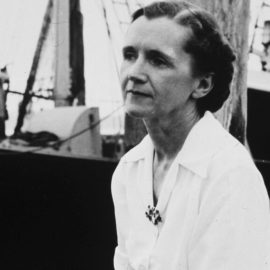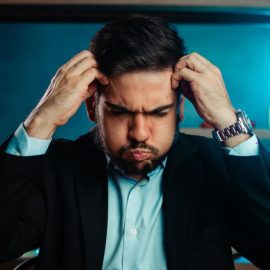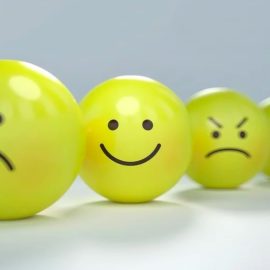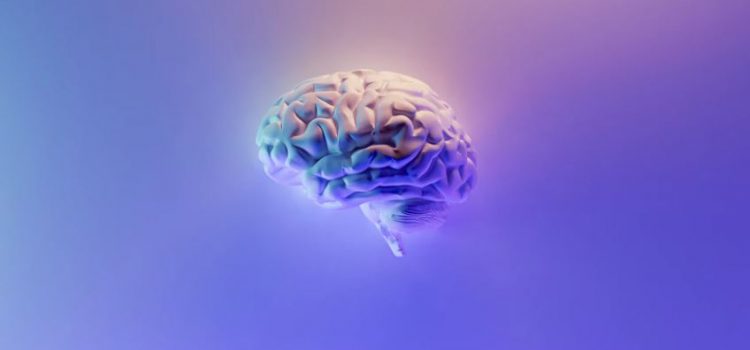
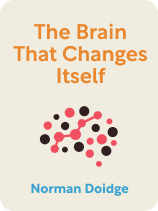
This article is an excerpt from the Shortform book guide to "The Brain That Changes Itself" by Norman Doidge. Shortform has the world's best summaries and analyses of books you should be reading.
Like this article? Sign up for a free trial here.
Can neuroplasticity heal brain damage? To what extent, can the brain naturally recover lost functions?
According to psychoanalyst Norman Doidge, neuroplasticity means we can change our brains to suit our needs. This has resulted in huge developments in neuroscience that have helped many people recover motor, sensory, and cognitive functions they had lost.
Let’s look at some instances of neuroplasticity’s healing power.
Help for Stroke Patients
According to Norman Doidge, neuroplasticity’s healing power should not be underestimated. Doidge cited that Edward Taub used his research with monkeys to develop a treatment for regaining motor control called constraint-induced movement therapy, or CI therapy. If a patient loses the ability to use one of their arms—a common result of strokes—this therapy re-teaches them to use it by constraining their good hand. Being forced to use their affected hand in everyday activities causes the brain to rewire itself to make those movements possible and then easier.
(Shortform note: New technology is being developed that could complement or substitute for Taub’s CI therapy: Scientists have created a virtual reality interface that allows stroke patients to “practice” performing everyday activities. Using their brain to control an artificial hand, the patients can see themselves performing these tasks, and the activities are shown to retrain their brains to use their impaired limbs or body parts similarly to the way Taub’s therapy retrains the brain.)
Taub’s therapy regimens are founded on three principles: training with activities we do in everyday life is more effective; training should be incremental; and training is most effective in massed practice. This means the training should be done in short, concentrated periods, which is more effective than training over a long period of time with less frequency.
(Shortform note: Massed practice appears to be effective specifically in reorganizing the brain to use an impaired body part. However, research suggests that for learning more complex tasks, massed practice may be less effective than distributed practice, which is carried out over a longer period of time with more breaks in between practice sessions. Distributed practice also seems to be more effective for learning and retaining new information and knowledge.)
Help for Patients With Balance Loss
Because plasticity can allow the brain to substitute one sense for another, it can also help someone to regain a lost sense such as balance. Balance, or the vestibular sense, tends to weaken as we age, leading to more frequent falls. Balance issues can also occur from brain damage.
In order to restore a patient’s sense of balance, neuroscientists use a device called an accelerometer to stimulate the patient’s tongue according to the movement of their head, letting them sense a change in their balance through the sensations on their tongues.
When patients use this device, new connections form between their balance system and their tongue. This provides a residual effect, so even when they take off the device, their new balance system keeps going for a while. The more and longer the device is used, the longer the residual effect, and it can eventually become permanent, fixing the patient’s balance issues entirely.
| Other Solutions for Balance Issues In addition to the accelerometer Doidge describes, scientists have developed other devices and methods of substituting another sense for a patient’s sense of balance. Part of our ability to balance comes from fluid canals in our ears that let us know if our bodies are moving or leaning in a given direction. Inner ear diseases and infections can interfere with this system. For balance issues resulting from inner ear damage, researchers are studying technology that could retrain the brain’s balance system by applying electrical stimulation to the ears’ fluid canals in response to the body’s movement using a prosthesis or implant. Other researchers are working on developing a type of insole that would apply small vibrations to the soles of the feet to help detect changes in movement. This treatment could be particularly effective in patients who have sensory loss in their extremities, as research has already established that these types of vibrations can help restore sensation in the feet. A third type of technology being developed uses sound to substitute for the vestibular sense: It detects a person’s movement and makes a sound when they lean in a certain direction. The patient can tell if they’re leaning forward or backward by the pitch of the tone, and they can tell left from right depending on which ear they hear the tone in. The tone grows louder the further they lean. |
Help for Patients With Phantom Limbs
Doidge says people with phantom limbs can also benefit from neuroplastic intervention. The term phantom limb refers to a sense of still having a limb that has been lost. So, for example, if you’ve had a leg amputated, you may develop a phantom leg that you can still feel as if the real leg were there. You may feel pain, pressure, or other sensations like itching, and you may also feel the physical sensation of moving that leg even though it’s not there anymore.
Some amputated limbs feel like a dead weight—like the limb is still there but is paralyzed or frozen. This happens because a limb is often immobilized with a cast or sling for a long time before the amputation. Scientists believe that the brain continues to send motor commands to it, only to receive no response to show that the limb is moving. Then, once the limb is amputated, the brain map that developed while it was immobilized—where the brain sends signals and the limb doesn’t respond—becomes fixed, and the brain continues to feel like the limb is there but is frozen or paralyzed.
Phantom pain works similarly. The brain continues to send commands to the amputated limb but receives no response, so the commands increase. The brain tries so hard to move the amputated limb that it causes the pain that your brain associates with trying too hard to move it (like how your hand hurts if you clench it too hard). According to Doidge, 95% of people who have a limb amputated suffer from long-term phantom pain.
To eradicate phantom pain, a device called a mirror box, developed by Vilayanur Subramanian Ramachandran, allows a patient who’s lost an arm to “see” their phantom arm by mirroring their good one. The box has two sections divided by a mirror. The patient places their existing arm into one section of the box and is then told to imagine putting their phantom arm into the other section. They then watch the reflection of their good hand and arm moving, which makes it look like their other arm is moving as well, and soon this causes them to feel like their phantom arm is moving along with the reflection. This ability to “move” their phantom arm helps relieve the pain they’re feeling, and over time, use of the mirror box can make the feeling of the phantom limb go away entirely.
(Shortform note: Ramachandran’s mirror box has proven to be very effective in treating phantom arms and pain, but new virtual reality technology may provide a solution that is more accessible and effective than the mirror box. By wearing a pair of VR goggles and a glove, plus electrodes on the stump of the missing limb, patients can not only see their missing limb being used as they play various games that involve both hands, they can also feel it thanks to the stimulation provided by the electrodes attached to their stump. Further research seeks to expand this technology to be applicable to lower body amputations as well.)
| Leftover Brain Maps and Phantom Pain The phenomenon of phantom limbs seems to fly in the face of what we know about neuroplasticity and the brain’s ability to rewire itself in response to changes: If we lose one of our limbs, it seems the brain should reorganize itself so that the maps devoted to controlling that limb become dormant or disappear entirely. However, research has shown that our brains can retain their maps for a missing hand for over three decades after the loss of the hand. While the reason for this isn’t fully understood, it may be useful in the development of brain-controlled prostheses, as the brain may be able to adapt to such a prosthesis with minimal retraining. Phantom pain also seems to be directly linked to these retained maps: The stronger the brain’s representation of the missing body part, the more intense phantom pain they experience. In many cases of severe pain from phantom hands, the brain’s representation of the missing hand is just as clear and strong as the representation of their remaining hand. However, there also seem to be fewer connections in these patients between the representation of the missing hand and the rest of the brain, so while the brain’s image of the hand remains strong, it’s often out of sync with the rest of the brain. |
Help for Patients With Learning Disorders
According to Norman Doidge, neuroplasticity may even allow us to “cure” learning disabilities. By studying what areas of the brain are affected by a disability, we can create specific types of mental exercises to strengthen those areas and treat the disability. People who struggle with speaking, reading, and writing often have issues in their premotor cortex, for example, and can benefit from exercises that strengthen that part of the brain. These might include tracing exercises, which involve tracing complex characters or lines to stimulate the neurons in the premotor cortex. People who have issues with auditory processing—understanding and remembering spoken information—may benefit from memorizing poems and stories.
(Shortform note: The idea that learning difficulties stem from individual parts of the brain has been well established, but recent research suggests this premise might be flawed. Instead, according to a recent study, these difficulties seem to come from poor connections between different parts of the brain. This suggests that learning disabilities are less the result of a single part of the brain struggling to process information and more the result of the brain having difficulty sharing information between different brain areas. Though this conflicts with Doidge’s explanations, it may help explain why something like speech can be improved through tasks as seemingly unrelated as tracing unfamiliar characters.)
A regimen like this is highly individualized. Doidge suggests that providing all children, regardless of disability, with an individualized plan that targets their weak areas could vastly improve their education and abilities later in life.
He also suggests that implementing these plans early can make a big difference, because otherwise the child will often attribute their weaknesses to “stupidity,” start to dislike learning, and avoid the activity they struggle with, which prevents them from getting stronger in that area.
(Shortform note: Doidge’s suggestion that all children would benefit from individualized learning that focuses on their unique needs and gifts is supported by research into both learning disabilities and giftedness. Research shows that students whose learning disabilities aren’t accommodated experience stress from their academic struggles at school, and students whose giftedness isn’t accommodated experience understimulation. Both situations can lead to behavioral problems and a dislike of school, and both can be avoided through more personalized education like what Doidge describes. Unfortunately, personalization requires a great deal of resources—more than are currently available to public schools in the US.)

———End of Preview———
Like what you just read? Read the rest of the world's best book summary and analysis of Norman Doidge's "The Brain That Changes Itself" at Shortform.
Here's what you'll find in our full The Brain That Changes Itself summary:
- How brain plasticity can help those with brain damage or congenital brain disorders
- Stories of real people whose lives have improved thanks to neuroplasticity
- A look at some of the negative effects neuroplasticity can have

